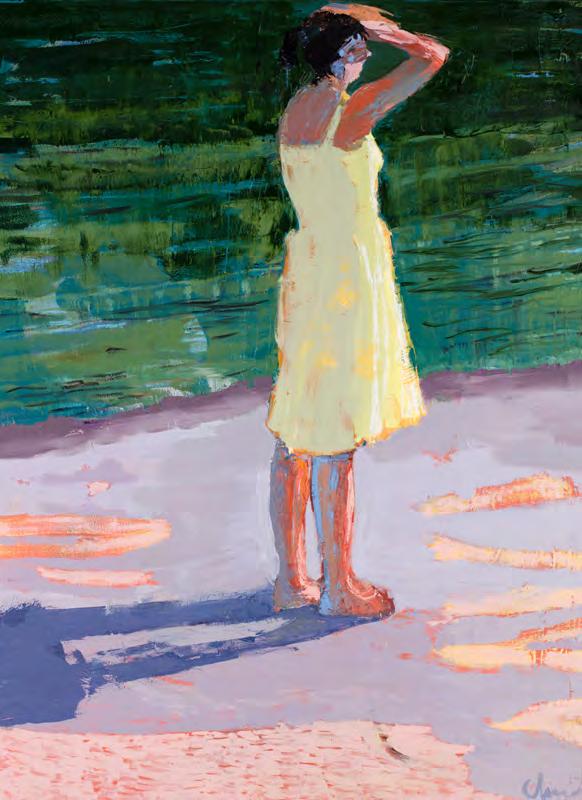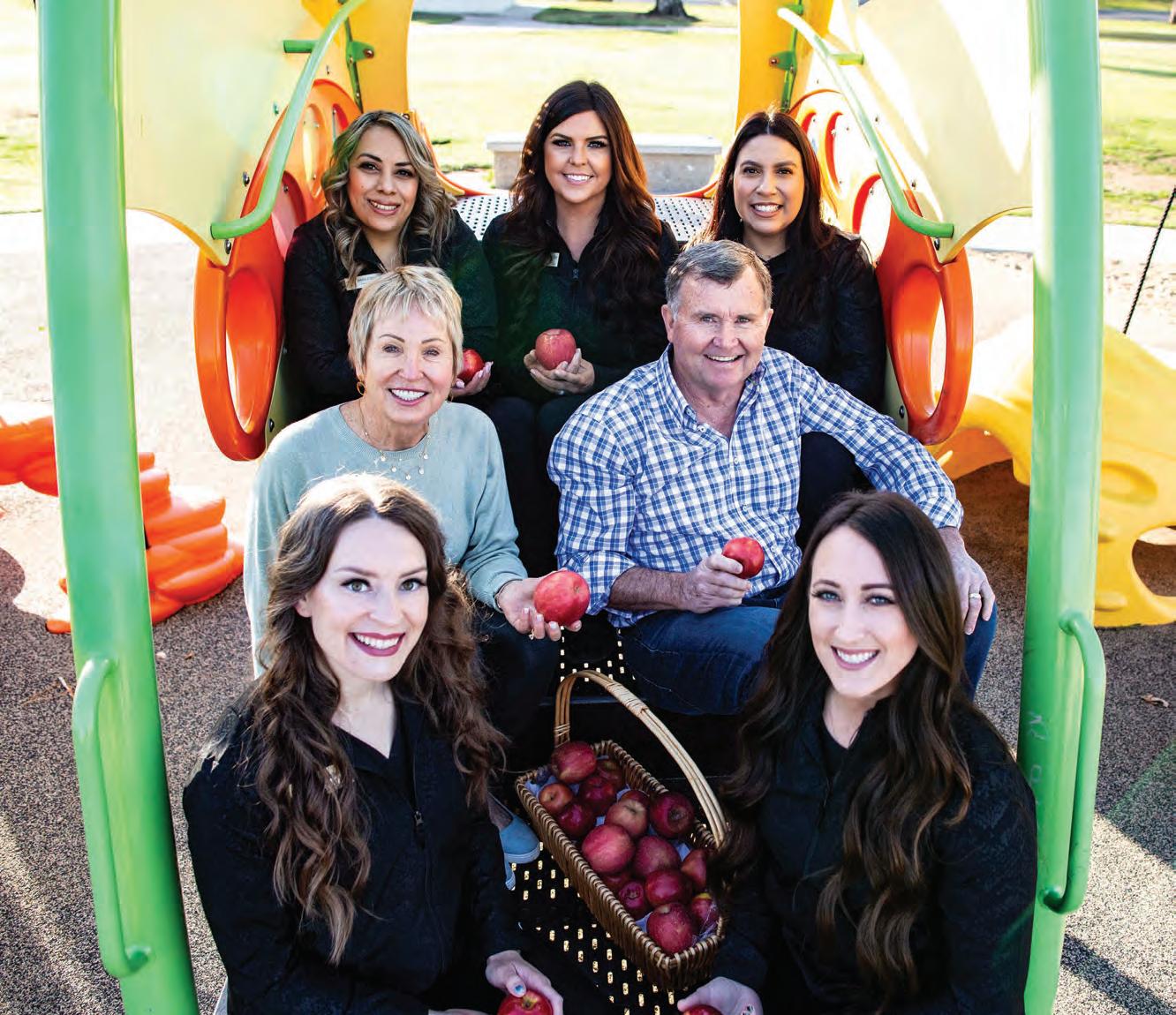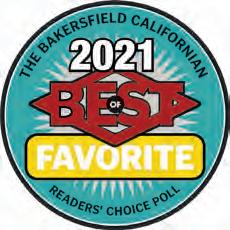
3 minute read
Arts & Culture
LEFT: Linda Christensen, “Lake 1,” 2017, oil on canvas, 60” x 48”. BOTTOM: Some of the outfits and memorabilia on display for "The Bakersfield Sound: Roll Out the Red Carpet” exhibition at the Bakersfield Museum of Art.

Advertisement
BMoA welcomes back visitors with number of exhibitions, activities
By Ema Sasic
» AS SPRING POPS UP IN BAKERSFIELD, SO TOO DO THE NUMBER OF ACTIVITIES AVAILABLE THROUGH THE BAKERSFIELD MUSEUM OF ART.
The museum reopened to the public in late March after nearly a year of being closed due to state COVID-19 guidelines. Putting it plainly, Lauren Marty, BMoA marketing and communications manager, said it’s good to be back.
“We are very excited to have visitors join us at BMoA. It’s been a very long year without them,” said Marty.
Currently, the museum has three exhibitions on display. The exhibitions opened virtually in February, but visitors can view them in person through the end of August.
“Color + Figure: Paintings by Linda Christensen” portrays faceless women, creating both liveliness and anonymity, according to the museum’s website. This is the artist’s first solo museum exhibition.
“Uncommon Perspective: Paintings by Art Sherwyn” depicts Bakersfield locales in vibrant colors. These paintings will be displayed and viewed by the public for the first time, allowing visitors to witness the most recent evolution of the artist’s practice in real time.
Finally, “The Bakersfield Sound: Roll Out the Red Carpet” includes several objects from private lenders, displayed for the very first time to the public. Other objects are from the Buck Owens’ Crystal Palace and Kern County Museum.
May will also have a number of activities available to people of all ages.
The museum will host the return of its community meditation and yoga classes on May 5 and 7, respectively, in its Tejon Sculpture Garden. The classes will be led by Stephen and Katherine Winters of White Wolf Wellness Foundation. To help ensure participants’ safety, class sizes are limited to 40 guests.
On First Friday, hours of operation are extended to 8 p.m. and free admission is offered.
First Friday and the yoga and meditation series are open to the public and no registration is needed.
May Saturday Studio classes for artists age 6 to 16 have also returned, but they’ll be held online until the museum receives guidance for hosting events, explained Marty. On May 7, students produce plaster sculptures along with BMoA art educators. The May 15 course will cover still-life watercolor painting.
Young artists can register for Saturday Studio courses online at bmoa.org/saturday-studio.
During Second Saturday, the next episode of the BMoA podcast will be released. Each podcast, co-hosted by BMoA Curator Rachel Magnus, gives access to special insight by artists, curators and historians.
“It’s also a perfect day to bring a lunch to enjoy in the sculpture garden,” added Marty.
In accordance with state and county agencies, BMoA is not hosting on-site events until it receives guidance from those authorities on how to host events safely. Until then, people can view the Visual Arts Festival Exhibition online at bmoa.org/visual-arts-festival.
Due to the pandemic, the Visual Arts Festival Exhibition, the biennial juried small works exhibition, will be held online only. Works displayed in that exhibition will also be available for sale at bmoa.org through July 1.
The past year has taught many a great deal about art and that it’s much more than pretty sculptures, photos or paintings on a wall, said Marty, making upcoming activities and future gatherings even more special.
“Art is a means of creating community, as we learned when we asked people to join our #bmoachalkyourwalk campaign on social media. People took to their driveways and sidewalks to draw beautiful, encouraging images in the early days of the physically distant,” she said. “Art can be a means of expression, a healing force, a reflection of the interconnectedness between the artist, their materials, and their environment.”
“Most importantly, we believe that every individual answers the question ‘Why is art so important?’ for themselves. As Kern County’s only accredited fine art museum, we consider it a privilege to be a place where the community can seek that answer for themselves,” she added.















